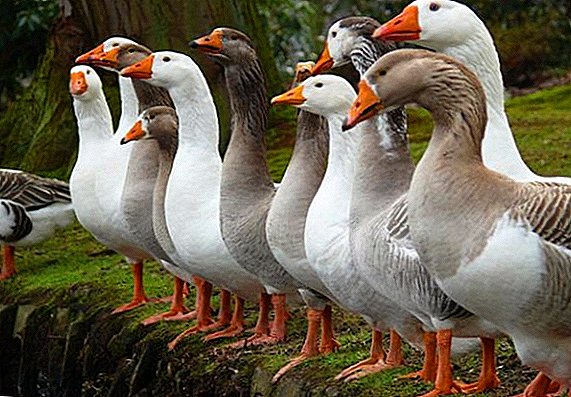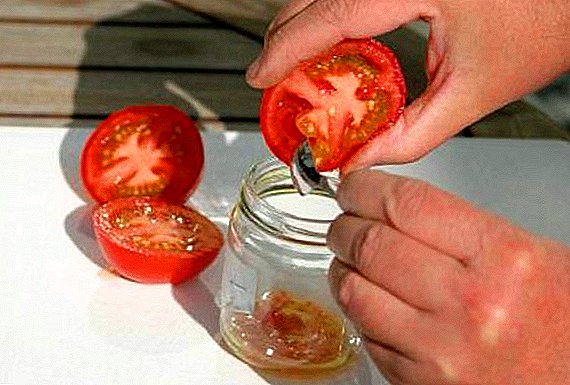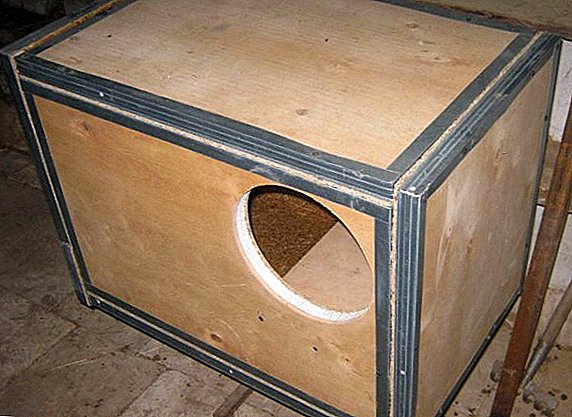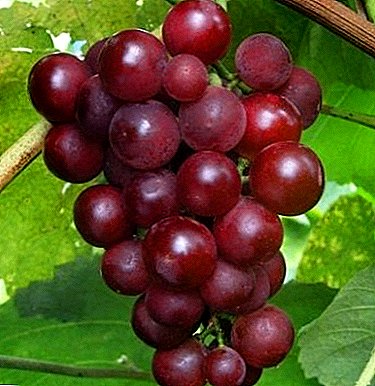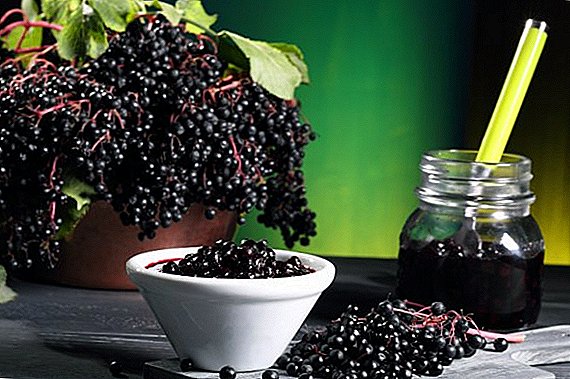 Recently, interest in new breeds of chickens is rapidly increasing, so it is not surprising that even quite unusual names attract attention. In this article, we will focus on such, not quite standard chickens, called "bielefelder". What kind of care they are entitled to and what they need to know about poultry breeding - read on.
Recently, interest in new breeds of chickens is rapidly increasing, so it is not surprising that even quite unusual names attract attention. In this article, we will focus on such, not quite standard chickens, called "bielefelder". What kind of care they are entitled to and what they need to know about poultry breeding - read on.
Description and features of the breed
The main feature of bielefelder is unusual color, but before understanding all the nuances of the appearance of this poultry, we will tell a little about the history of its origin.
Selection
The history of breeding the described breed has more than forty years since it was bred by breeders in the 70s of the twentieth century. The merits of the received chickens almost immediately allowed them to win the love of farmers in many countries of the world, among which domestic breeders are no exception.  Bielefelder has German roots, and her "parent" is Herbert Roth. The general public learned about the breed in 1976, when its representatives were made public at the exhibition “German Defined”, which was held in Hannover. Then the chickens did not have the usual name today, and the name "bielefelder" appeared a little later, when he was accepted by members of the German Breeding Birds Federation and issued a conclusion on the breed as a whole.
Bielefelder has German roots, and her "parent" is Herbert Roth. The general public learned about the breed in 1976, when its representatives were made public at the exhibition “German Defined”, which was held in Hannover. Then the chickens did not have the usual name today, and the name "bielefelder" appeared a little later, when he was accepted by members of the German Breeding Birds Federation and issued a conclusion on the breed as a whole.
Did you know? In 1984, domesticated birds, outwardly similar to bielefelder, but slightly smaller, were recognized as a separate breed, as a result of which people started talking about a dwarf variety of such chickens.
In short, studying the description of the bird, we can safely say that the breeder was able to get quite decent result: these are large chickens, characterized by a calm character, which have a very attractive appearance and are not afraid of frost. In addition, all representatives also have very good egg production.  To obtain such high characteristics, the specialists had to use more than one breed, among which were rhode island, new hampshire, welsumer, amroxes. Each of them contributed to the formation of a new bird.
To obtain such high characteristics, the specialists had to use more than one breed, among which were rhode island, new hampshire, welsumer, amroxes. Each of them contributed to the formation of a new bird.
Read also about the breeds of chickens: maran, master gray, highsex, brahma, Poltava, leggorn, Kuchinskaya anniversary, Zagorskaya salmon, Adler silver, redbro.
External characteristics
Today there are many large breeds of chicken meat and egg direction, but this breed stands out against their background with a very beautiful and unusual color of plumage - golden-black color has small stripes. The back, neck and head of roosters are different in ocher color, and small white specks are visible throughout the body, mixed with black stripes. The plumage is dense.  The body of the rooster has an elongated shape, with a wide chest and medium wings. The belly is rounded and appears to be constantly full. Well visible and slightly raised tail, especially in combination with completely bare legs. The shoulders of the males are wide, and the neck is powerful and thickly covered with feathers. Red earrings differ in medium size and standard oval shape. On the leaf-shaped crest there are four larger teeth and one small tooth at the ends. They have cocks and an oval beard. The weight of an adult individual is about 4-4.5 kg.
The body of the rooster has an elongated shape, with a wide chest and medium wings. The belly is rounded and appears to be constantly full. Well visible and slightly raised tail, especially in combination with completely bare legs. The shoulders of the males are wide, and the neck is powerful and thickly covered with feathers. Red earrings differ in medium size and standard oval shape. On the leaf-shaped crest there are four larger teeth and one small tooth at the ends. They have cocks and an oval beard. The weight of an adult individual is about 4-4.5 kg.
In contrast to the representatives of the stronger sex, the female half of the inhabitants of the coop has a reddish neck and head, and on the stomach and sides there are light brown spots, gradually turning into black and white, and then dark brown stripes on the back. Like males, the plumage is rather dense and wide. The hens' breasts are somewhat wider than those of roosters, their belly is much fuller, and the forward bending of the body has a smaller angle. Both males and females make it possible to get very good meat, and the latter also carry a lot of eggs. The weight of an adult chicken is 3.5-3.9 kg.  The character of the Bielefeldors is calm and peaceful enough. They are never in a hurry and just walk around the yard.
The character of the Bielefeldors is calm and peaceful enough. They are never in a hurry and just walk around the yard.
Important! The main feature of the described poultry is the autosex color of young age by day. This means that as soon as the chicken hatches from the egg, the breeder will immediately know who is in front of him: a rooster or a chicken. Males are predominantly yellow, with light cinnamon stripes on the back and a large bright spot in the head area. The hens are darker, moreover, they have clearly visible black stripes near the eyes and on the back.
All bielefelders grow quickly and put on weight, which is good news for breeders.
Productivity
Describing this breed of chickens, it is simply impossible not to recall their high productivity in terms of egg production. Eggs are large, and chickens rush almost all the time, so that in a year 190-230 eggs can be collected from just one bird (they differ in light brown shell color, and their weight is about 60-70 g).  The maximum productivity of chickens reach at the age of two years, provided that the reproduction of eggs began at the age of six months. In a three-year-old bird, the egg-laying indices drop again and do not return to the previous figures.
The maximum productivity of chickens reach at the age of two years, provided that the reproduction of eggs began at the age of six months. In a three-year-old bird, the egg-laying indices drop again and do not return to the previous figures.
We advise you to read about the breeds of chickens: Sussex, Kokhinkhin, Brown Slang, Orpington, Dominants, Minorca, Black Bearded, Russian White, Andalusian, Fireball, Vianandot.
What to look for when buying
For breeding chickens of the Bielefelder breed on your plot, you can purchase already hatched chickens or buy eggs from representatives of the breed. In the latter case, the risks are greater, since it is very difficult to determine whether you really sold what you need. It is clear that all specimens must fully comply with the size and shape of the eggs obtained from the hens of this breed, but even if there are no defects on them, it is difficult to guess how much the breed will be and if there will be any chicken.
Important! Before laying eggs for incubation, their shelf life should not exceed five days. In addition, the storage process should take place in appropriate conditions, at a temperature within + 8 ... +12 ° C.
With the purchase of already mature chicks you will have to where more chances to get really good representatives of the breed. All that is needed is to examine each chicken and pay special attention to its color: in males, the plumage will be light yellow, with a “hawk” bright spot on the head, and in the hens its color is somewhat darker. Moreover, even in very small layers it is easy to see black stripes around the eyes, which is another characteristic breed trait.  “Getting to know” the parents of purchased chickens will help to avoid disappointment. As far as possible, try to personally evaluate the conditions of the poultry and its appearance, which must fully comply with the requirements of the Bielefelder breed.
“Getting to know” the parents of purchased chickens will help to avoid disappointment. As far as possible, try to personally evaluate the conditions of the poultry and its appearance, which must fully comply with the requirements of the Bielefelder breed.
Conditions of detention
Given the relatively large size of the hens described breed, it is easy to assume that they will need a certain amount of space for comfortable accommodation. This applies to both the inside of the premises and walking.
Chickens need to organize such conditions so that, while walking, they do not constantly stumble upon each other, therefore, if space allows, it is better that only one individual per 1 m². When organizing the roosting, one should not forget about the rather impressive weight of the bielefelder, because if you place them too high, then, trying to get there, the chicken can fall and be injured. The best option would be a height of 50 cm.
Important! Representatives of the described breed are not prone to conflicts, and their calm disposition will not allow them to fight back more aggressive relatives (for example, egg varieties of chickens and crosses). The latter can constantly take food from them, and in time they will generally force them out of the occupied territory.
There is also another important nuance: if you have several roosters and you have already seated them in different henhouses, then you can not bring the males together again, because, most likely, they will begin to oppress each other. 
Courtyard for walking
No matter how spacious the erected coop is, we must not forget that for the normal development of large bielefelders they need and regular walkspreferably in an open courtyard. If there are no other aggressive animals near the chicken coop and at home and you can provide chickens with safety, then this will be an excellent solution to the problem.
Walking free, they themselves will be able to find food for themselves, which means it will be possible to save on feed, and there will be more benefits from such food. On hot days, it is worthwhile to arrange a drinker around the perimeter, and also try to ensure the bird has a free way back to the hen house.
To limit the contact of chickens with wild birds (they often act as carriers of various infections), you can stretch the canopy over the walking area.
What to feed
According to the description of the Bielefelder breed and reviews of farmers who have long been engaged in breeding such chickens, they are not picky about food and calmly eat almost any compound feed. However, we should not forget that for normal growth and development the food they consume must be rich in vitamins and microelements, which means that you need to add vegetables to the menu (beets, cabbage, peas, soybeans and corn). As a main “dish,” birds are given bran, corn and oats, although to the extent possible (usually in the summer), it is worthwhile to include more greens in the diet.  For active egg production, chickens need to constantly add meat-and-bone and fish meal, as well as introduce chalk, rakushnyak and egg shells into the ration, of course, having ground them well.
For active egg production, chickens need to constantly add meat-and-bone and fish meal, as well as introduce chalk, rakushnyak and egg shells into the ration, of course, having ground them well.
If you breed chickens for egg production onlythen no special food additives should be used, instead you can give them more protein foods: cottage cheese, greens, eggs, and starting from 1.5 months - ground wheat and barley. Birds are fed 2-3 times a day, alternating between dry food and a wet mash (for example, in the morning and in the evening dry rations, and in the afternoon wet porridge with bran). In the summer, from feed can be generally abandoned.
Vaccination, care and cleaning
Bielefeldars have good health, but this does not mean that they do not need proper care. One of the most important requirements is cleanliness inside the chicken coop and in places of walking birds. Representatives of this breed, perhaps even more than their other relatives, are very susceptible to crowding and dirt, which means that it will not be possible to avoid mass death of pets in unsanitary conditions.  General cleaning It is recommended that rooms be occupied immediately with the arrival of spring, removing litter and treating feeders with hot water with the addition of caustic soda. For the period of processing the bird is temporarily transferred to another room. In addition, do not forget about the regular cleaning of the litter in the henhouse. The frequency of this procedure depends on the size of the room and the number of its inhabitants.
General cleaning It is recommended that rooms be occupied immediately with the arrival of spring, removing litter and treating feeders with hot water with the addition of caustic soda. For the period of processing the bird is temporarily transferred to another room. In addition, do not forget about the regular cleaning of the litter in the henhouse. The frequency of this procedure depends on the size of the room and the number of its inhabitants.
Important! For greater effect, the floor in the hen house can be treated with special disinfectants, which are easy to find in specialized stores.
The risk of disease will be lower in chickens kept clean, on a sufficient area and with a full diet, in which there is a lot of greenery.
As for poultry vaccinationthen every owner decides whether it is needed or not, but in any case it will be useful to know the opinion of the veterinarian. The specialist will explain which vaccines can be used in which order, and will also objectively evaluate the appropriateness of their use. 
Rearing
Bielefelder chickens breed successfully without human assistance, but for owners who are focused on getting full-fledged representatives of the breed, it is important to control this process. In most cases, incubation of eggs (you can take from your birds or purchase from another breeder) uses special incubators, and the owner only needs to lay eggs in him and control the process with the help of appropriate instruments.
There is nothing difficult in this task, and after carefully reading all the requirements for using such a machine, one can expect a high hatchability of chicks.
Maintenance and care
Like an adult bird, it is very important to keep bilefelder chicks clean. They are distinguished by intolerance to the dirty floor, bowls, or sun-drenched food, because of which the young can become sick. When caring for very small chickens, it is important to wash the feeders every time and change the water, regularly cleaning the litter (at least 1 time per day). 
Feeding
Representatives of this breed grow very quickly and gain weight, so they need food with a high protein content.
Did you know? Some owners have found a very interesting solution to the problem of balanced nutrition of young animals, simply adding chopped dog food (puppies) to the diet of chicks.
In general, this option is not devoid of sense, because in the production of such nutrition is used so important for the growing body bone meal, but again, it is important to be confident in the quality of the purchased product and not to use it in unlimited quantities.  Several times a week, chickens can be given well-chopped boiled fish and cottage cheese, which will provide the growing body with calcium and the protein it needs. From grain crops, you can add peas, soybeans, barley, wheat, and oats to the diet, periodically adding shredded vegetables to them.
Several times a week, chickens can be given well-chopped boiled fish and cottage cheese, which will provide the growing body with calcium and the protein it needs. From grain crops, you can add peas, soybeans, barley, wheat, and oats to the diet, periodically adding shredded vegetables to them.
To provide their wards with animal protein, some owners even create dung heaps in order to pick out worms over time. Of course, this is completely optional, but there will be a lot of benefit from such a decision: first, the chickens will get a lot of useful things, and second, the plants that are planted in the garden can be fertilized with the remaining humus.
Bielefelder chickens are easy to maintain, so they are suitable for breeding for both experienced farmers and novice poultry farmers, and high-quality meat and tasty eggs will be a reward for proper keeping and proper care.


